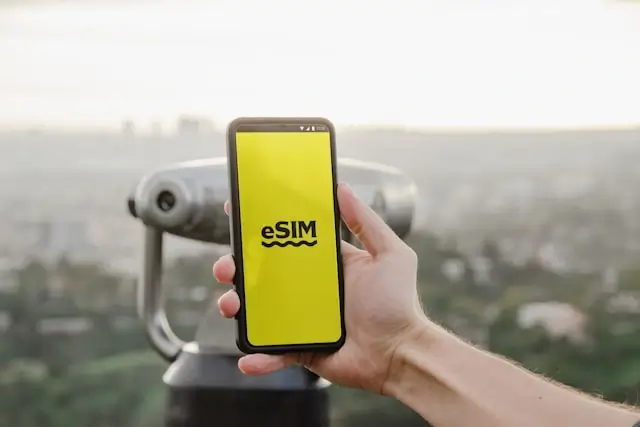It’s a scenario almost every traveler has faced: you check into your hotel, unpack, and eagerly connect to the “free Wi-Fi” that promises to keep you online during your trip.
At first glance, it seems like a convenient perk. But relying on hotel Wi-Fi as your main source of connectivity is one of the biggest mistakes you can make while traveling. Slow speeds, poor security, and unreliable coverage can quickly derail your plans.
A far smarter option is arranging your own connection before you even board your flight, such as picking up the best UK prepaid sim card for tourist use. Here's why getting an eSIM for overseas travel beats relying on free wifi everytime!
Why eSIM is the Smartest Internet Connection for Travel Anywhere

The False Promise of “Free Wi-Fi”
Hotels love to advertise free internet as part of their amenities, but the reality rarely matches the promise. Many travelers find themselves dealing with:
- Glacial speeds when dozens of guests log on at once.
- Limited coverage that only works properly in certain areas, like the lobby but not your room.
- Extra charges for “premium” speeds that should have been standard.
What should be a helpful travel tool often becomes a source of frustration, especially if you rely on internet access for navigation, booking tickets, or keeping in touch with family.

The Security Risks You Can’t Ignore
Beyond speed and convenience, security is a serious issue. Public Wi-Fi, including hotel networks, is notoriously vulnerable.
Hackers often exploit these open systems to access personal information, including bank details and private messages. Even with basic precautions, it’s impossible to guarantee your data is safe when you’re sharing a network with hundreds of strangers.
If you’re traveling for work, the risks are even higher. Connecting to company emails or cloud files over unsecured Wi-Fi can put sensitive information at risk.

Why Having Your Own Connection Is Essential
Instead of gambling on hotel networks, having your own data connection puts you back in control.
Whether you’re navigating a new city, translating menus on the go, or checking train timetables, a personal connection means you’re never dependent on unreliable Wi-Fi.
Other advantages include:
- 24/7 access: No waiting until you’re back at the hotel to get online.
- Peace of mind: Secure networks protect your personal information.
- Convenience: Seamless access for maps, ride-share apps, and streaming without interruptions.
- Flexibility: Stay connected on day trips, tours, and rural adventures where hotel Wi-Fi won’t reach.

Smarter Alternatives to Hotel Wi-Fi
Travelers today have several affordable alternatives that keep them connected without stress:
- Prepaid SIM cards – Affordable, widely available, and ideal for travelers who want a local number and data plan.
- eSIMs – Digital SIMs you can install directly on your phone, perfect for those who don’t want to juggle multiple SIM cards.
- Portable Wi-Fi devices – Handy for groups who want to share one connection across multiple devices.
Among these, prepaid SIMs are the most popular choice thanks to their balance of cost, reliability, and simplicity.
How to Make the Switch Smoothly

If you’re worried about setup, the process is far easier than most travelers expect.
Prepaid local SIMs can be ordered online before you leave, or bought at airports and convenience stores on arrival. Many providers now offer unlimited data packages designed for tourists, giving you instant access without hidden costs.
To make the most of your travel SIM:
- Turn off background app updates to save data.
- Download offline maps before heading out each day.
- Use Wi-Fi selectively (like in your room for streaming) while keeping your SIM as your main connection.
Conclusion

Hotel Wi-Fi may look like an easy option, but it often brings more problems than solutions.
From poor speeds to serious security risks, it’s simply not a reliable way to stay connected. Choosing your own travel-friendly solution, like a prepaid SIM or eSIM, ensures you stay online wherever you go — without the stress.
When you’re abroad, the last thing you want is for bad Wi-Fi to ruin your plans. With a little preparation, you can enjoy your trip knowing you’ll always have a dependable connection in your pocket.
Disclaimer:
This post may contain affiliate links. I receive a small commission at no cost to you when you make a purchase using my link.








